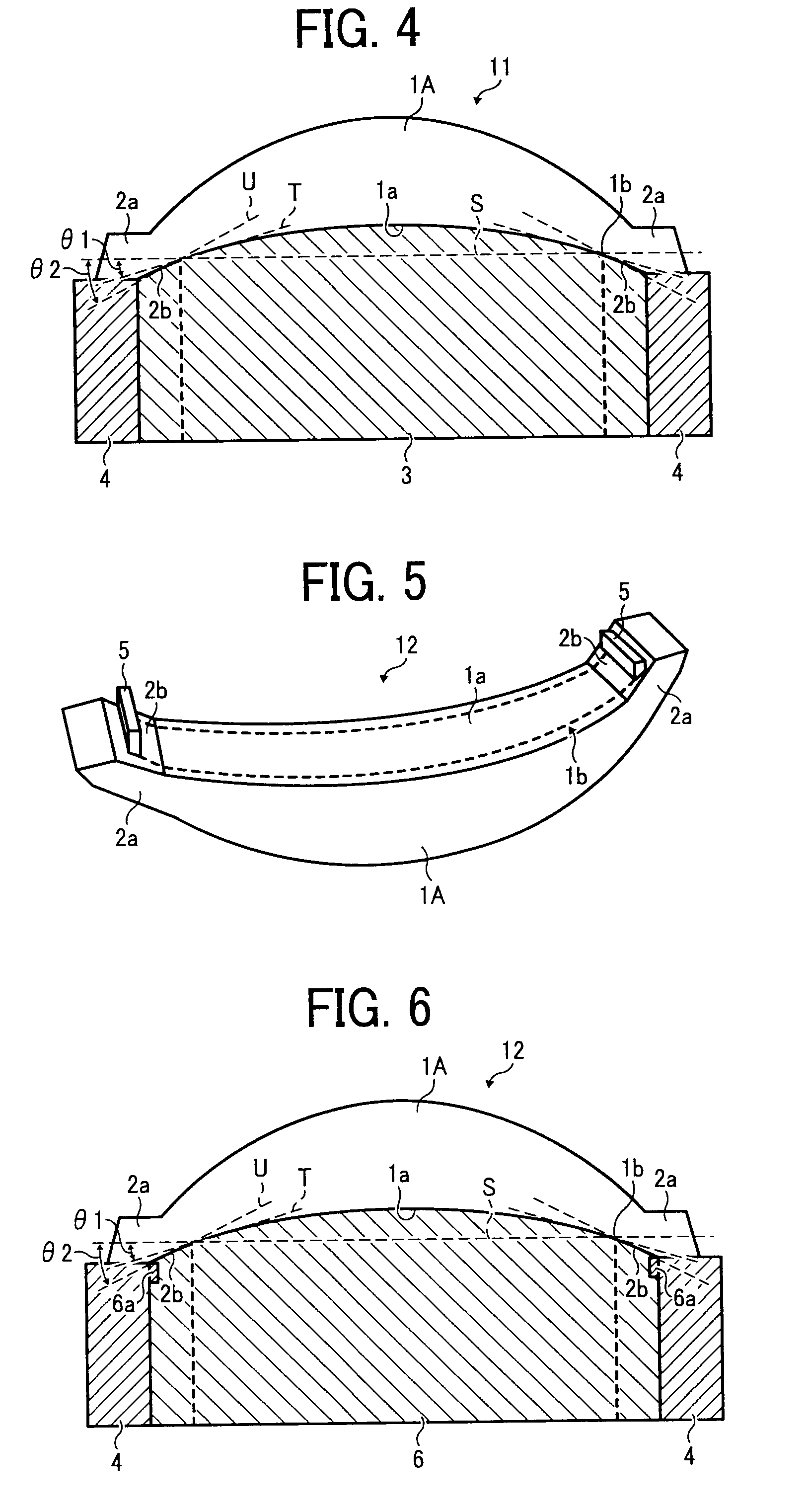Plastic optical element, nest structure, die, optical scan apparatus and image formation apparatus
a technology of optical elements and nest structures, applied in the field of plastic optical elements, can solve the problems of adversely affecting the optical performance, external defects, sink marks in molded plastic articles, etc., and achieve the effect of improving mass productivity and less optically harmful external defects
- Summary
- Abstract
- Description
- Claims
- Application Information
AI Technical Summary
Benefits of technology
Problems solved by technology
Method used
Image
Examples
first embodiment
[0042]The first embodiment of the present invention will be described with reference to FIGS. 1, 2. FIG. 1 is a schematic perspective view of a plastic optical element according to the first embodiment. FIG. 2 is a vertical cross sectional view of an essential part of the plastic optical element molded in the nest structure of a die. Structure and operation of a plastic optical element 10 will be described using as an example an fθ lens as a component of an optical scan apparatus incorporated in a color laser beam printer.
[0043]The plastic optical element as an fθ lens comprises an optical element body 1A comprising a transfer surface 1b which includes at least one laser beam incident portion 1a of a concave shape and support portions 2a integrally formed with the optical element body at right and left ends thereof in the drawings. The plastic optical element 10 (11 to 14) has symmetric shapes relative to a central line so that only one part thereof will be described with reference ...
second embodiment
[0050]The second embodiment of the present invention will be described with reference to FIGS. 3, 4. FIG. 3 is a schematic perspective view of a plastic optical element according to the second embodiment. FIG. 4 is a cross sectional view of an essential part of the plastic optical element molded in the nest structure of a die. Structure and operation of a plastic optical element 11 will be described using as an example an fθ lens as a component of a later-described optical scan apparatus, as in the first embodiment.
[0051]The plastic optical element 11 according to the present embodiment is the same as that 10 in the first embodiment except that the optical element body 1A and the parts 2b of the support portions 2a are integrally molded in the same nest structure 3 in replace of the laser beam incident portion 1a and the parts 2b of the support portions 2a.
[0052]The plastic optical element 11 according to the present embodiment includes the support portions 2a which are each placed...
third embodiment
[0054]The third embodiment of the present invention will be described with reference to FIGS. 5, 6. FIG. 5 is a schematic perspective view of a plastic optical element according to the third embodiment. FIG. 4 is a cross sectional view of an essential part of the plastic optical element molded in the nest structure of a die. Structure and operation of a plastic optical element 12 will be described using as an example an fθ lens as a component of a later-described optical scan apparatus, as in the first embodiment.
[0055]The plastic optical element 12 according to the present embodiment is the same as that 10 in the first embodiment except that the right and left support portions 2a each include a rib 5 and that a nest structure 6 provided with concavities 6a for molding the ribs 5 is used in replace of the nest structure 3.
[0056]The feature of the plastic optical element 12 lies in that the laser beam incident portion 1a, the parts 2b of the support portions 2a, and the ribs 5 are mo...
PUM
 Login to View More
Login to View More Abstract
Description
Claims
Application Information
 Login to View More
Login to View More - R&D
- Intellectual Property
- Life Sciences
- Materials
- Tech Scout
- Unparalleled Data Quality
- Higher Quality Content
- 60% Fewer Hallucinations
Browse by: Latest US Patents, China's latest patents, Technical Efficacy Thesaurus, Application Domain, Technology Topic, Popular Technical Reports.
© 2025 PatSnap. All rights reserved.Legal|Privacy policy|Modern Slavery Act Transparency Statement|Sitemap|About US| Contact US: help@patsnap.com



